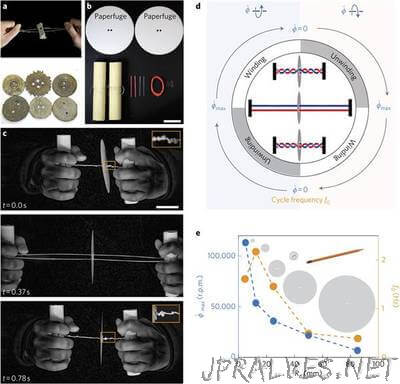
“Here’s how to build a whirligig: Thread a loop of twine through two holes in a button. Grab the loop ends, then rhythmically pull. As the twine coils and uncoils, the button spins at a dizzying speed. Now, using the same mechanical principles, Stanford bioengineers have created an ultra-low-cost, human-powered centrifuge that separates blood into its individual components in only 1.5 minutes. Built from 20 cents of paper, twine and plastic, a “paperfuge” can spin at speeds of 125,000 rpm and exert centrifugal forces of 30,000 Gs. “To the best of my knowledge, it’s the fastest spinning object driven by human power,” said Manu Prakash, an assistant professor of bioengineering at Stanford. A centrifuge is critical for detecting diseases such as malaria, African sleeping sickness, HIV and tuberculosis. This low-cost version will enable precise diagnosis and treatment in the poor, off-the-grid regions where these diseases are most prevalent. The physics and test results of this device are published in the Jan. 10 issue of Nature Biomedical Engineering.”
